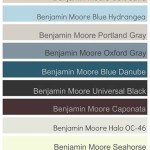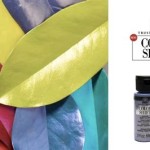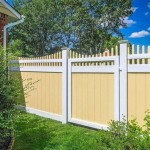Best Exterior House Paint Colors for 2024
Selecting the ideal exterior house paint color is a significant decision that impacts curb appeal, property value, and overall aesthetic satisfaction. The year 2024 sees a continuation of established trends alongside the emergence of fresh palettes influenced by nature, sustainability, and a desire for tranquility. This article explores the best exterior house paint colors for 2024, providing insights into popular options and factors to consider during the selection process.
The choice of exterior paint color is not simply a matter of personal preference. It involves considering the architectural style of the house, the surrounding landscape, and the neighborhood context. Additionally, understanding the undertones of different colors is crucial for achieving the desired visual effect and ensuring long-term satisfaction with the painted exterior.
Earthy Neutrals and Natural Tones
Earthy neutrals and natural tones remain a dominant force in exterior house paint color trends for 2024. These colors offer a timeless appeal and blend harmoniously with the surrounding environment. They evoke a sense of calm and stability, making them a popular choice for homeowners seeking a sophisticated and understated aesthetic. Popular variations in this category include:
Warm Grays: Warm grays, distinguished by their subtle beige or brown undertones, provide a versatile and modern alternative to traditional cool grays. They pair well with a variety of architectural styles and landscaping elements. Warm gray is especially effective in creating a welcoming and inviting feel, especially when contrasted with crisp white trim.
Greiges: Greige, a blend of gray and beige, continues to be a sought-after color due to its adaptability. It offers a balance between the coolness of gray and the warmth of beige, making it suitable for a wide range of climates and architectural designs. It complements various roofing materials and trim colors, providing flexibility in design choices.
Soft Whites: Soft whites, characterized by creamy or ivory undertones, offer a classic and timeless option. They create a clean and sophisticated look while providing a neutral backdrop that allows landscaping and architectural details to stand out. It is important to consider the specific undertones of white to ensure it complements the surrounding environment and avoids appearing too stark.
Taupe: Taupe, a brownish-gray, brings a touch of natural warmth and sophistication. Its neutrality allows it to blend seamlessly with natural landscapes, making it a popular choice for houses surrounded by greenery. Taupe can shift its appearance depending on the lighting conditions, showcasing different undertones throughout the day.
When selecting earthy neutrals, it is important to consider the specific climate and lighting conditions. Warmer tones tend to work well in cooler climates, while cooler tones can help to balance the intensity of bright sunlight. Sample patches should be tested on the exterior of the house to observe how the color appears at different times of day and under varying weather conditions.
Nature-Inspired Greens and Blues
Inspired by the growing emphasis on sustainability and connection with nature, greens and blues are becoming increasingly popular choices for exterior house paint in 2024. These colors evoke feelings of tranquility, freshness, and harmony, creating a welcoming and serene environment. Different shades and tones within these categories offer unique aesthetic possibilities:
Sage Green: Sage green, a muted and earthy green, is a versatile color that evokes a sense of calm and sophistication. It complements both traditional and modern architectural styles and pairs well with natural materials such as stone and wood. Sage green is particularly effective in creating a harmonious connection with the surrounding landscape.
Olive Green: Olive green brings a sense of richness and depth to the exterior of a house. It offers a more saturated and grounded alternative to lighter greens and pairs well with neutral trim colors and natural accents. Olive green can evoke a sense of timeless elegance and can be particularly striking in wooded settings.
Light Blue: Light blue shades, such as sky blue or powder blue, offer a refreshing and airy aesthetic. They evoke feelings of tranquility and openness and are particularly well-suited for coastal or cottage-style homes. Light blue can be paired with white trim for a classic and timeless look or with bolder accent colors for a more contemporary feel.
Teal: Teal, a blend of blue and green, offers a more vibrant and contemporary option. It adds a touch of personality and sophistication to the exterior of a house and can be particularly effective as an accent color. Teal pairs well with neutral base colors and can be used to highlight architectural details or create a focal point.
When using nature-inspired colors, it's essential to consider the surrounding landscape and the overall style of the house. Muted tones often work well in natural settings, while brighter shades can add a pop of color to more urban environments. Always test samples on the exterior of the house to evaluate how the color interacts with natural light and surrounding elements.
Bold Accents and Statement Colors
While neutral and nature-inspired colors dominate overall trends, bold accents and statement colors offer opportunities to inject personality and create visual interest. These colors can be used strategically to highlight architectural features, create focal points, or add a touch of drama to the exterior of a house. Key considerations when using bold colors include:
Charcoal Gray: Charcoal gray offers a dramatic and sophisticated alternative to lighter grays. It provides a bold contrast against lighter trim colors and landscaping elements. Charcoal gray can be particularly effective in highlighting architectural details and creating a modern and impactful aesthetic.
Deep Blue: Deep blue shades, such as navy or indigo, bring a sense of elegance and depth to the exterior of a house. They pair well with white trim and natural wood accents and can be used to create a classic and timeless look. Deep blue can also be used as an accent color on doors, shutters, or other architectural features.
Terracotta: Terracotta, a warm and earthy reddish-brown, evokes a sense of rustic charm and natural beauty. It is particularly well-suited for houses with Mediterranean or Southwestern architectural styles. Terracotta pairs well with neutral trim colors and natural stone accents.
Black: Black, while often considered a bold choice, can be used effectively to create a modern and sophisticated look. It provides a dramatic contrast against lighter trim colors and landscaping elements. Black is particularly effective in highlighting architectural details and creating a strong visual impact. When using black, it is important to consider the climate and the potential for heat absorption.
The use of bold accent colors requires careful consideration to ensure they complement the overall design and do not overwhelm the exterior. It is essential to balance bold colors with neutral base colors and to use them strategically to highlight specific features or create focal points. Testing samples in different lighting conditions is crucial to ensure the desired effect is achieved.
Beyond the fundamental color, the choice of paint finish also influences the final aesthetic and the durability of the exterior paint. Matte finishes offer a subtle, non-reflective appearance, while satin finishes provide a slight sheen and are easier to clean. Semi-gloss and gloss finishes are more reflective and durable, making them suitable for trim and accent areas. The choice of finish should be based on the desired aesthetic and the specific needs of the surface being painted.
Before committing to an exterior paint color, homeowners should also consider the impact of regional architectural styles and homeowner's association guidelines. Some communities have specific restrictions on exterior paint colors, and it is essential to comply with these regulations to avoid future issues. Furthermore, drawing inspiration from surrounding houses and architectural styles can help to ensure that the chosen color complements the neighborhood aesthetic.
The selection of exterior house paint colors for 2024 reflects a continued emphasis on natural tones, sustainable aesthetics, and personalization. By understanding the latest trends and considering the specific factors related to their property, homeowners can make informed decisions that enhance curb appeal and create a lasting impression.

Top Exterior House Colors For 2024 Which Color To Choose

2024 Exterior Paint Trends According To The Experts Scout Guide

2024 Color Of The Year 5 Paint Colors To Inspire Your Exterior Scheme Davinci Roofscapes

The 14 Best Exterior House Colors For 2024 Brick Batten

2024 Exterior Paint Trends According To The Experts Scout Guide

Top 5 Exterior Colours To Use In 2025 Home Painters Toronto

The 15 Best Exterior House Colors Of 2024 Brick Batten

Top Exterior House Colors For 2024 Which Color To Choose

Top 5 Exterior Colours To Use In 2025 Home Painters Toronto

Top 15 House Exterior Trends For 2024 Nikki S Plate
Related Posts








